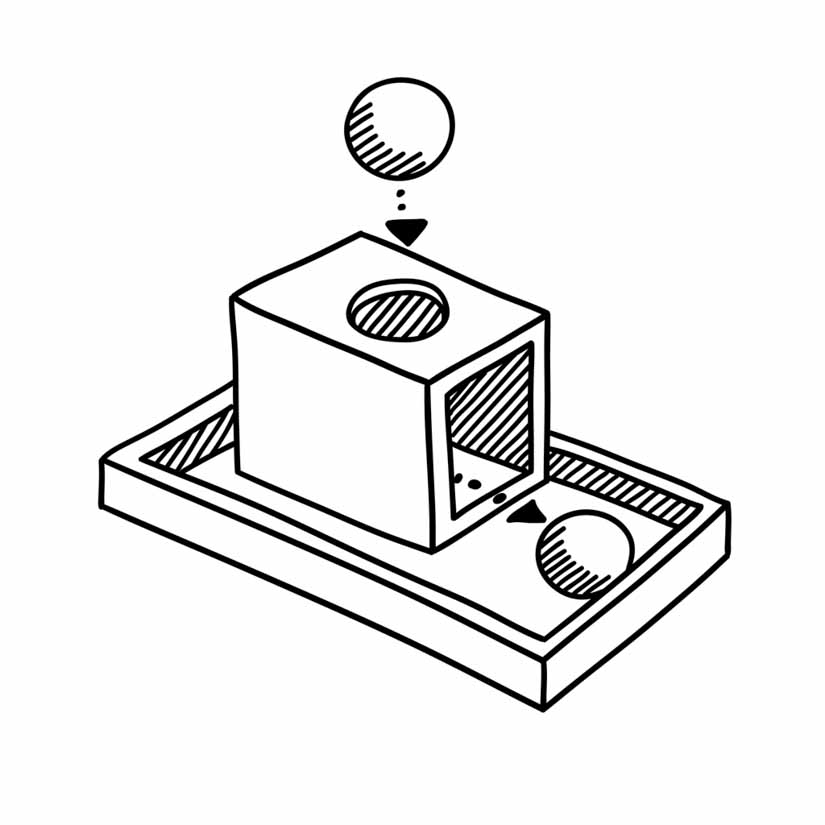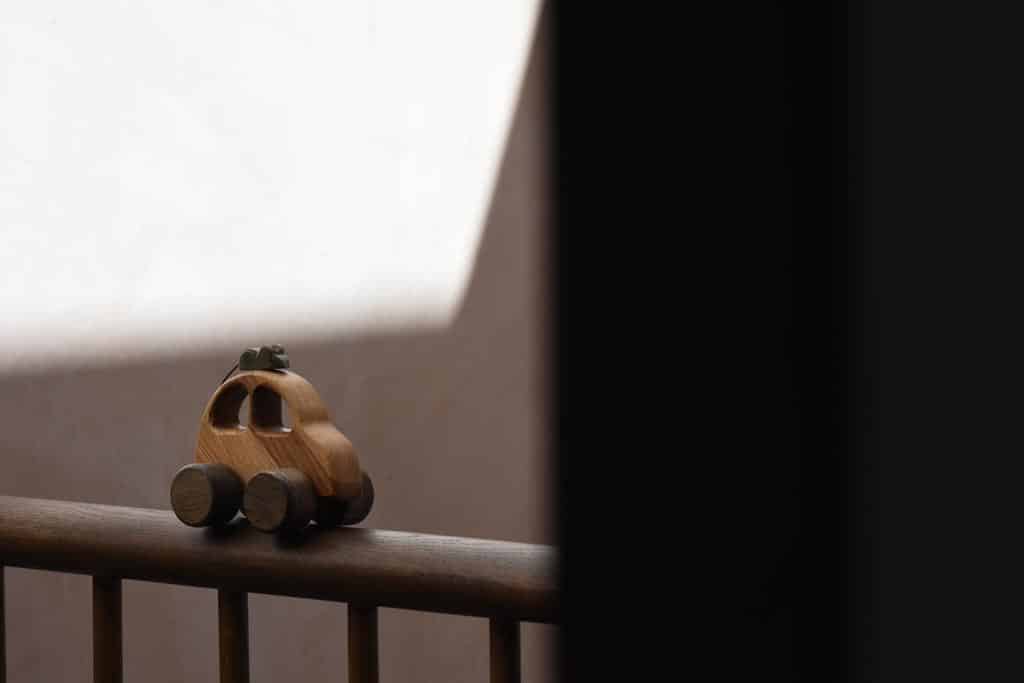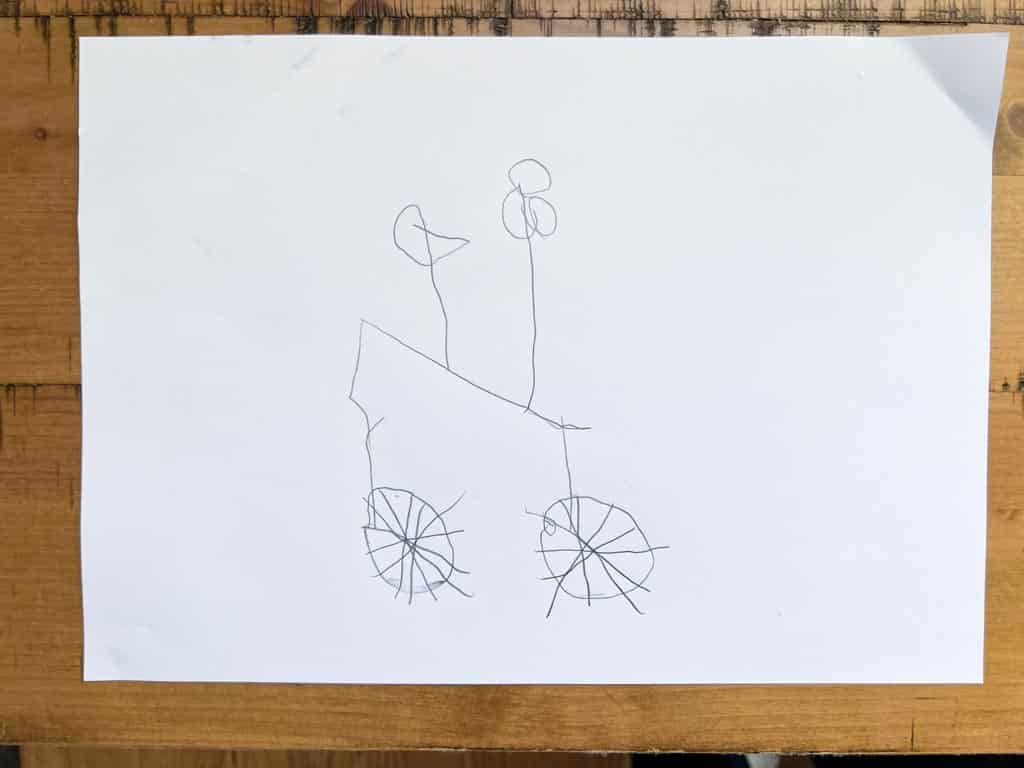Here’s a picture. It’s some of my best work:
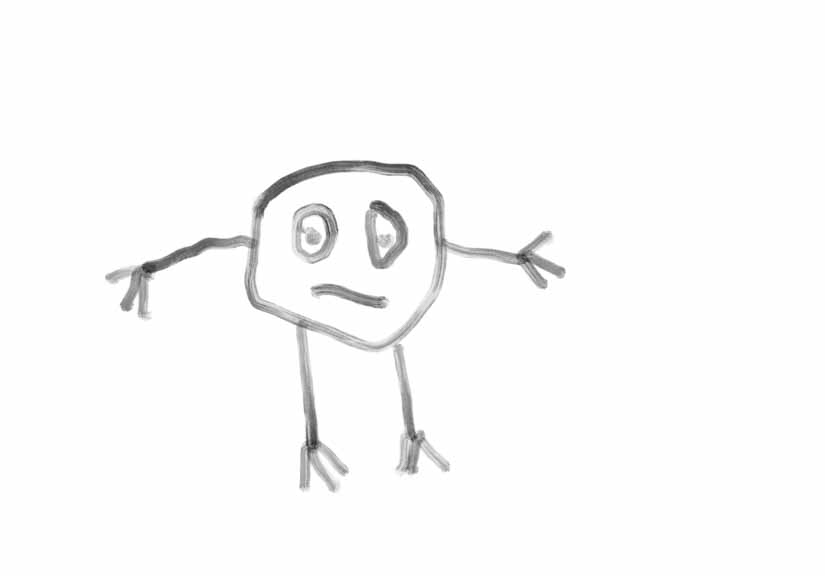
Paintbrush in hand, I get ready to dab some more colour onto the page.
Stop!, you say, Don’t paint any more. It’s perfect!
But I ignore you.
At first it looks like I’m just going to colour it in…
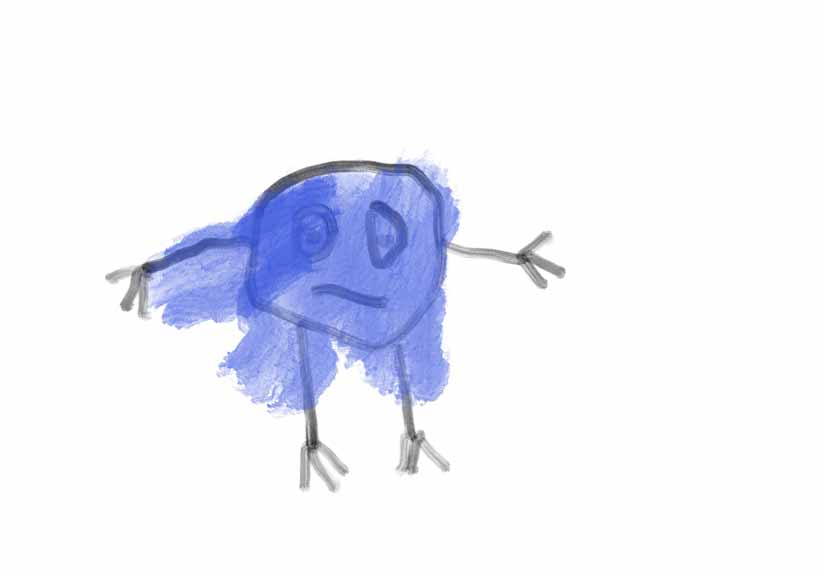
That’s a bit sloppy, you think. But you’re a sensitive adult and you don’t want to hurt my feelings.
But I don’t stop there. I carry on, painting and painting.
Please stop now, you think. You’re ruining it.
But I keep going until the entire sheet is covered.

Eventually I add so much paint that the paper soaks through and holes start to appear. What’s on the other side? I seem to be wondering.
What’s going on here? Why did I destroy my work?
The truth is that I didn’t care about the figure. I wanted to see what happened when I covered him up. I wanted to make him disappear.
This is the enveloping schema.
We explore it in all kinds of ways.
We cover ourselves up with a silk, playing peek-a-boo:

We make slings and swaddling for dolls:
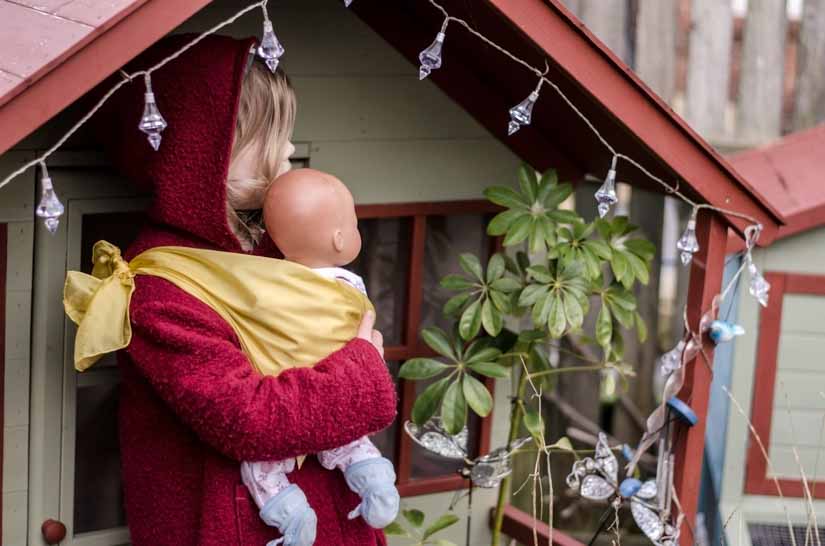
We make dens to hide inside:

We wrap things up or put them into bags:

But we’re not going to talk about schemas today. You can read more about action and graphic schemas in these posts.
Today we look at how this kind of play can affect our children’s attachment relationships.
Object permanence
When your child envelops things, she is exploring the idea of object permanence. That is, the idea that things exist even after they have disappeared from view. Things that go away, come back.
‘Peek-a-boo’ apparently comes from the Old English words for ‘dead’ and ‘alive’. Am I coming back or not? As parents, we instinctively understand that this is a game our children should know.
As babies become toddlers, they explore this concept in other ways. They post things into holes or cover them up. They play hide-and-seek by covering their own eyes, thinking that you can’t see them.
Daddy, you fool. I’m too smart for you. You’ll never find me…
And we play along with the game. We look everywhere. Where is that child? Is she in the cupboard? No! Is she under the table? No! Oh, there you are! How clever! What a great hiding place!
They find this hilarious.
Outsmarted by a toddler. But you are doing something important. You are building a bond of trust.
Attachment theory
Attachment is the emotional bond between you and your child.
It’s a dependency relationship. She is vulnerable and needs you to guide and protect her.
It all starts with a belief that you won’t disappear. Abandonment is every baby’s biggest fear. It’s why children can be clingy or attention seeking. They use ‘attachement behaviours’ if they are worried you will leave them. So much bad behaviour is merely a cry for more attention and a feeling of safety.
A securely attached child knows you will come back.
This is important from a developmental perspective because she has the confidence to leave you in order to go off and explore the environment. She has the confidence to play and to interact with others, safe in the knowledge that you will be there for her if ever she needs you. She has new and interesting experiences. She learns.
Separation games
One way to form a stronger attachment is to play separation games.
Depending on your child’s age, you can play peekaboo, hide-and-seek or tag (with a secure ‘home’ base).
In these games, you are apart from your child for a short while. By ‘coming back’, you allay her anxiety and encourage her to separate more willingly in future because she is confident you will return.
Note: It’s much scarier for your toddler when you are the one who hides. She worries that she might never find you, that you’ll be lost forever. But when she hides, she is free to reveal herself whenever the tension gets too much and she craves a reunion and a hug.
Learn more about attachment
There are nine types of games you can play to strengthen the attachment bond with your child. We cover them all in A Year With My Child, our course for toddlers.
Final word
Enveloping > object permanence > peek-a-boo > attachment. Where does one end and the other begin? Like so much in child development, the boundaries aren’t clearly marked. But that’s OK. The important thing is to spend time with your child. Build a strong relationship and all kinds of good things will flow from it.
Play peekaboo, make an object permanence box, play hide-and-seek. Attachment play is easy and fun. Turn off the phone and spend uninterrupted time with your child. Make her feel loved and valued.
When you leave the room – or the house – tell your child. Don’t just tiptoe out, hoping she won’t notice. Let her know that you are going – and that you will return.
In the end, secure attachment is about trust.
P.S. Here’s a DIY activity to try at home:
As you have probably already discovered to your cost, babies and toddlers love to post things into holes.
To save your keys from being dropped down the back of the radiator, you can make a DIY object permanence box, like this one, using a tissue box, a tray and a ping-pong ball.
